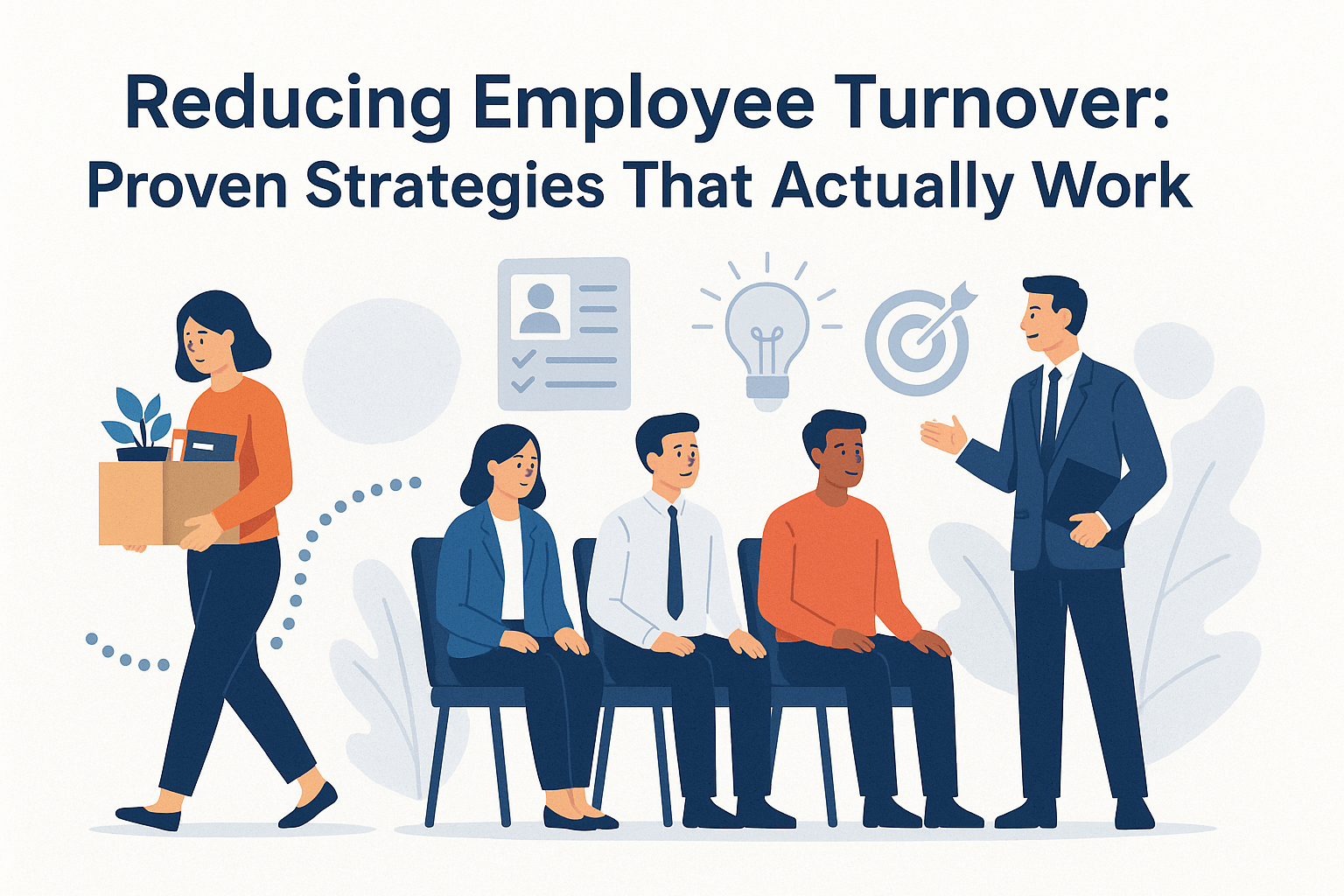Key Takeaways
- Employee turnover is a critical challenge for organizations of all sizes.
- High turnover impacts morale, productivity, and company culture.
- Data-driven strategies can significantly help curb turnover rates.
- Investing in retention leads to long-term business success.
Table of Contents
- Why Employee Turnover Matters
- What Drives People to Leave?
- How Turnover Costs Add Up
- Early Warning Signs of Turnover Risk
- Proven Retention Strategies That Make a Difference
- Building a Supportive Company Culture
- The Role of Leadership in Reducing Turnover
- Measuring Success and Adapting Your Approach
- Conclusion
Why Employee Turnover Matters
Organizations across industries grapple with the ongoing challenge of employee turnover. Retaining skilled talent is more crucial than ever as workforce expectations shift rapidly and competition for top performers increases. The employee turnover rate—the percentage of staff who leave within a specific period—serves as a vital metric for businesses to understand and address, as it reflects the health of a company’s internal environment. High turnover can spell disaster for morale, disrupt cohesion, and create additional work for remaining team members. In today’s business climate, organizations that ignore rising turnover rates risk falling behind their competitors. According to the Society for Human Resource Management, the events of the past several years have further shaped how companies must address attrition, with turnover trends shifting post-pandemic. In addition to operational hurdles, a high employee turnover rate negatively impacts long-term organizational culture and productivity. Even businesses with robust onboarding programs find that frequent departures diminish trust and knowledge continuity. This makes proactive efforts to boost retention a cornerstone of modern HR strategy. By understanding why retention matters, leaders can more precisely align their policies with organizational goals and workforce needs. Addressing turnover is not just an HR task—it’s a company-wide initiative that must be championed at every level.
What Drives People to Leave?
There is no single cause behind an employee’s decision to leave—rather, turnover is usually the result of multiple workplace factors culminating over time. Chief among these are burnout, lack of career growth, inadequate compensation, poor management, and insufficient work-life balance. According to industry research, burnout alone has become a leading reason employees seek new opportunities, especially as workloads and responsibilities have increased in certain sectors. The rise of remote and hybrid work arrangements has also shifted expectations. While workplace flexibility can boost satisfaction, disparities in communication, lack of access to resources, and limited career mobility can prompt employees to pursue roles elsewhere. Addressing these drivers by fostering an engaging environment and clear pathways for development is essential to long-term retention.
How Turnover Costs Add Up
The true cost of turnover is often underestimated. According to the Work Institute, replacing an employee can cost as much as 33% of their annual salary, factoring in recruiting, onboarding, training, and lost productivity. In large organizations, these costs escalate quickly, especially in high-turnover industries like retail and hospitality. This comprehensive guide by Built In details the multifaceted costs of turnover. Hidden costs compound the direct outlays of recruitment and onboarding. Knowledge loss, lower morale, and the time managers must spend filling gaps all contribute to lost revenue and stunted growth. For context, the Bureau of Labor Statistics found that turnover remained elevated across many sectors even as hiring rates recovered post-pandemic, highlighting the persistent financial drag caused by voluntary exits.
Early Warning Signs of Turnover Risk
Recognizing early indicators of disengagement or dissatisfaction allows organizations to intervene before an employee decides to leave. Red flags include declining productivity, increased absenteeism, lack of participation in team activities, and withdrawal from mentorship programs. A sudden drop in performance or morale should always prompt further exploration, not just disciplinary action. Regular check-ins, open communication channels, and data analytics can help managers spot trends among at-risk employees. Employers who take early action—through more frequent feedback, conversations about career growth, and support for work-life balance—often see improved retention outcomes. Forbes highlights the value of “stay interviews” as a powerful retention tool when properly implemented.
Proven Retention Strategies That Make a Difference
Successful organizations use data-driven retention strategies, focusing on employee feedback, career development, and upskilling. Consistent employee feedback, such as surveys and interviews, helps leaders identify reasons for employee retention and potential reasons for departure. Investment in learning and career growth opportunities, such as tailored development plans and mentorship, encourages loyalty and reduces the likelihood of valuable talent leaving for less desirable roles. Workplace flexibility, including remote options and personalized benefits, sets companies apart and contributes to a positive employer brand. These strategies aid retention and contribute to a positive employer brand.
Building a Supportive Company Culture
Culture underpins every aspect of retention. Employees who feel recognized, respected, and included are more likely to remain engaged and committed long-term. Initiatives around diversity, equity, and inclusion, along with formal recognition programs, form the bedrock of a strong company culture. Organizations with inclusive cultures experienced lower turnover and higher engagement. Case studies abound of organizations transforming retention through culture shifts. For instance, companies that implemented regular peer recognition and open feedback platforms not only saw reduced turnover but also improved innovation and collaboration. Developing a strong sense of belonging is thus an investment that yields measurable results.
The Role of Leadership in Reducing Turnover
Strong, empathetic leadership is a decisive factor in retention. Leaders set the tone for transparency, accountability, and support. When executives and managers actively listen, respond to concerns, and make positive changes based on input, employees take notice and tend to feel more valued. Real-world examples reveal that even small shifts in leadership behavior can make a substantial difference. Companies where leaders prioritize regular check-ins, accessible mentorship, and constructive feedback typically see greater satisfaction and much lower turnover rates.
Measuring Success and Adapting Your Approach
Retention is an ongoing journey. Key metrics like voluntary turnover rate, internal promotion rate, employee engagement scores, and retention after training investments should be tracked consistently. Data-driven HR teams use these metrics to identify successes and rapidly adjust strategies. Continuous feedback loops, agile HR practices, and regular reviews ensure that retention initiatives remain aligned with business goals and workforce needs. Improved retention not only saves on direct replacement costs, it also strengthens organizational knowledge and culture over time.
Conclusion
Reducing employee turnover requires a multifaceted, proactive approach. From leadership engagement to building inclusive cultures and leveraging data, organizations that invest deliberately in their people see long-lasting benefits. Prioritizing retention is not just about mitigating loss—it’s about building a sustainable foundation for growth in today’s rapidly changing world.

Chase Ortiz is part of the team at PaigeSimple, where he takes care of all the advertising requests. With a sharp eye for detail, Chase makes sure every advertising opportunity is handled smoothly, helping the site grow and reach more people. His ability to manage these tasks efficiently makes him an important part of the team.

